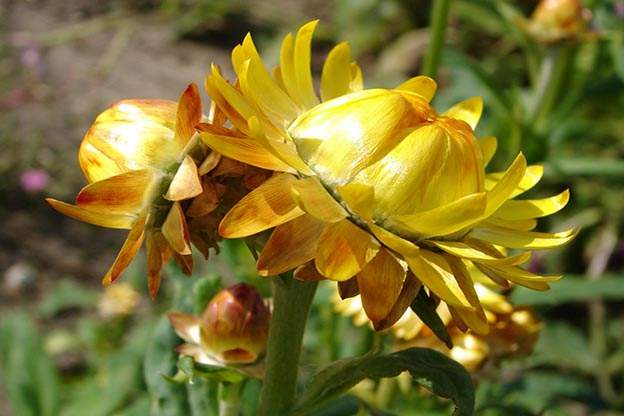
Strawflowers, sometimes called "everlasting flowers," can be used in fresh arrangements, as well as dried for winter bouquets.
Everlasting daisies belong to the Compositae family, and their botanical name is Helichrysum bracteatum. They need at least six hours of sun a day to grow and are happiest with full sun, except in the Deep South. They will look spindly when they don't get the required amount of sun and, like most annuals, if they are overfed they grow more leaves than flowers. They come in a wide range of yellows, whites, oranges, and reds with yellow centers.
My native Australia is famous for everlastings, and the Swan River daisies from Western Australia come in rose, white, and deep pink.
Here in the U.S. one of our best everlastings is Gomphrena globosa (globe amaranth), which has small round pompom blooms in purple, pink, and white. A popular newer red variety is ‘Strawberry Fields'.
Many American gardeners also like Limonium, commonly called statice, which produces dark purple, yellow, pink, and white flower heads.
Just hang all everlastings upside down in small bunches in a dark well-ventilated spot to dry, if you want them to live up to their name.
NOTE:
- Blue Globe Thistle, red cockscomb Celosia, and white or pink Baby's Breath are also easy to dry. Look for them at Farmer's Markets, and remember to plant some yourself next spring.
- A pretty dried combination in a vase for winter is annual blue salvia and globe amaranth.
- Hanging flowers upside down to dry makes the stems dry straight. I dry my flowers by bunching them together with rubber bands after removing the leaves. I then hang them from my mantle in the living room, using the hooks that are used at Christmas for the stockings.









